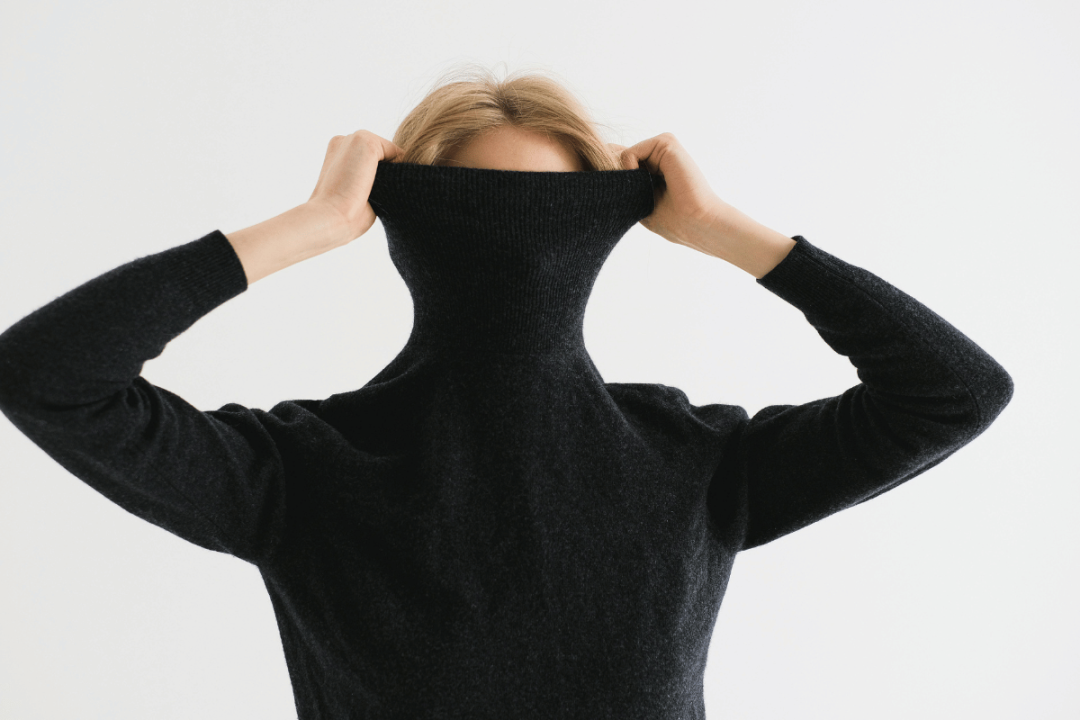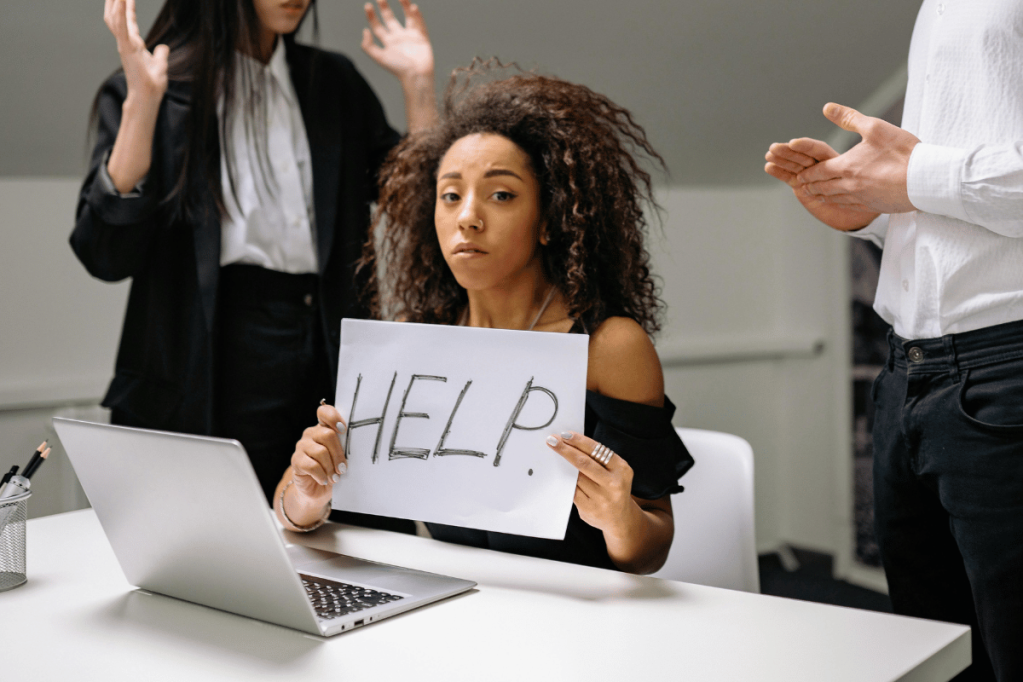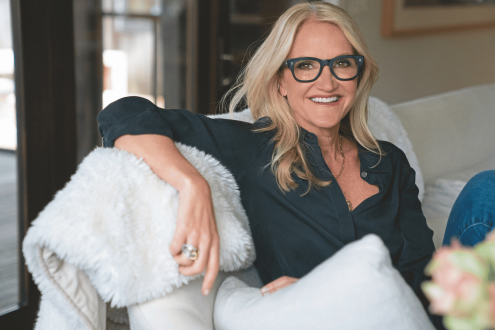Are you ADHD masking? Here’s how to tell

We’re becoming ever more aware of conditions such as ADHD and autism, so how have they stayed hidden in plain sight for so long? Rachel Morgan-Trimmer explains.
Words: Rachel Morgan-Trimmer, images: shutterstock
I rushed into the room, sweaty from running, hair all over the place and blurted out one of the myriad excuses I use when I’m late (which is often). ‘I’m so sorry, the traffic was terrible.’ ‘… I got held up.’ ‘… there was an emergency.’ Why do I say these things? Because it’s easier than saying ‘I’m late because I have ADHD which means I have a very poor concept of time, am unable to prioritise, and while I knew I should be getting ready, I sat on my bed for half an hour, scrolling through Facebook reels.’
This is an example of ADHD masking. And anyone who has ADHD will be familiar with a scenario like the one above, even if they’ve never even heard of masking.
What is masking?
Masking is when you adapt your behaviours to fit in. It’s not exclusive to people with ADHD – you’ll have done it yourself if you’ve ever been to a job interview, met up with family you’re not close to, or wanted to impress on a date. But masking is something people with ADHD do to an extent that it becomes harmful.
It goes way beyond putting your best face on – it involves camouflaging your natural self, resisting your impulses, and rehearsing what you’re going to say. Some people with ADHD even spend time studying behaviours of others, so they know how they’re ‘supposed’ to act.
We use the term ‘masking’ when we talk about autistic people a lot, but it affects those with ADHD too. The similarities are that we often do it subconsciously or unconsciously, and it comes from a need to be psychologically safe. People with ADHD receive so many negative messages about the traits we can’t help, like being disorganised, lack of time management, or distractability, that we start to try to conceal these traits by attempts to suppress them, explaining them away, or over-apologising.
Priscilla Eyles, who is mixed race and gender queer, recognises the intersection of ADHD masking with their other identities. ‘My experience of masking is often trying to meet socio-cultural expectations, for example, behaving in a way that is seen as “professional”, or trying not to come off as too “intense” or “inappropriate”.’

The damage that masking causes is underestimated. Those who mask report the exhaustion that comes from pretending to be someone you’re not (even when masking is unconscious) – and there is a knock-on effect on both your physical and mental health. This is acknowledged by coach Kim To. ‘Masking my ADHD takes energy. It’s tiring to suppress your feelings and thoughts and conform to what’s considered “normal”.’
That use of energy to fit in can make us lose focus and become less productive, which impacts on our workplaces and homes as well as ourselves. ADHD UK ambassador Kathleen Helm recalls masking in order to elicit praise.
‘I would focus so much on eye contact that that was literally all I was focused on. I wasn’t even really taking in what was being said. My mind and inner narrative were focused on controlling every part of my body to look like I was paying attention.’
One aspect of masking is that it doesn’t allow for deep connections with each other; emotional and social connections which are vital to our wellbeing. We don’t show our true selves because we’re embarrassed and ashamed of who we are. And how can you really get to know a person when they’re too afraid to show you their true self? Neurodiversity expert Amanda Riley explains how it felt to her: ‘When you mask, you hide your true self. You hide the ADHD parts of you, due to fear or stigma, and you mirror others to fit in.’
The outcome of exhaustion and the lack of social connection can be unhealthy or even harmful behaviours. People with ADHD are more likely to have problems with issues such as addiction, obesity and mental health, and often have trouble with relationships, sometimes becoming enmeshed in unhealthy partnerships; or engaging in risky behaviour.

How to recognise masking
ADHD masking is often so ingrained that those of us who are masking often don’t even recognise it ourselves. This is particularly true of Gen X women, who were frequently brought up to put others first, at a cost to themselves.
Riley explains: ‘I hid my true self for so long that even six years post-diagnosis I struggle to understand what is the mask and what is the real me.’
So if we can’t recognise it ourselves, how can we see it in others? There are certain things people with ADHD will do which can give you a clue, although this list is not exhaustive, and of course, people without ADHD might do some of these things too:
- • Over-delivering
- • Over-apologising
- • Over-explaining
- • Toe tapping (because it’s less visible)
- • Socially acceptable fidgets, like doodling
- • Disguised fidgets, such as taking notes or finding excuses to get up
- • Being a ‘good listener’ (zoning out can look like this)
- • Feeling the need to make excuses
- • Using timers, clocks, schedules and reminders more than most people (and again, excusing this)
- • Not doing anything fun in our free time (because we’re exhausted and/or overwhelmed)
- • Being early (it’s over-compensating or to avoid anxiety about being late)
- • Signs of unhealthy behaviours which we may well try to hide, but which still show signs, like too much phone use, alcohol or over-eating
- • Unusually difficult social or romantic relationships, which could be shown as falling out with or ghosting people, being in toxic or co-dependent relationships, complaining about a partner, etc
- • Looking blank or walking off when faced with emotive information or events – this is an attempt to regulate our emotions so we don’t lose our temper or cry in front of people.

How to create a safe space for people to be themselves
We need to break down the barriers that the mask has created. Being positive about the benefits of ADHD can be a really good start – for example, if someone says sorry for being late (again), try responding by sharing how their time blindness creates a more relaxed vibe when you’re together. Or if they interrupt, acknowledge their ability to make connections, or come up with great ideas. People with ADHD frequently only hear about the deficits of their condition, and talking about the strengths can help reframe it. Seeing it as a positive (or neutral) can help someone unmask.
Humour is also an under-utilised but effective tool to create a safe space. It must be used with caution as ADHD people can be sensitive to perceived criticism, even when it’s meant as a joke (as can anyone), but using humour around ADHD (especially if you have it yourself) can help people feel more relaxed and comfortable.
Eyles says it’s important for people with ADHD to be with ‘people who support you and value you for who you are, who are patient and understanding and who won’t take your challenges personally’. This is key to creating a safe space.

Unmasking isn’t a one-off event, it’s a gradual process that can take a long time. When you empower people with ADHD to unmask it not only gives them some much-needed psychological safety, but it makes the world a more inclusive place. For all of us.
Rachel Morgan-Trimmer is a neurodiversity consultant, founder of FireBird and author of How to Be Autistic.









